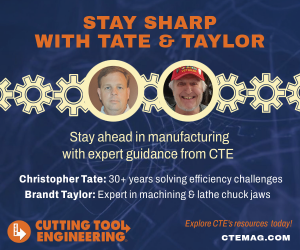Government concerning itself with manufacturing? What would the Founding Fathers think? We know the answer: December marked 220 years since Secretary of the Treasury Alexander Hamilton submitted his “Report on the Subject Manufactures” to the House of Representatives. In it, he argued in favor of manufacturing as a contrast to the Jeffersonian vision of an agrarian society, and that action from the federal government was necessary if U.S. manufacturing was to thrive.

Alexander Hamilton submitted his “Report on the Subject Manufactures” to the House of Representatives 220 years ago.
“Not only the wealth, but the independence and security of a country, appear to be materially connected with the prosperity of manufactures,” Hamilton wrote, arguing for tariffs on imported goods and incentives for domestic producers.
Hamilton almost seems to have foreseen the arguments of today’s champions of automation. “The employment of machinery forms an item of great importance in the general mass of national industry,” he wrote. “It is … an accession of strength, unencumbered too, by the expense of maintaining the laborer. May it not, therefore, be fairly inferred, that those occupations, which give greatest scope to the use of this auxiliary, contribute most to the general stock of industrious effort, and, in consequence, to the general product of industry?”
Citing the British invention of the cotton mill as an example, he noted, “It is an advantage of great moment that operations … continue, with convenience, during the night, as well as through the day.”
One can imagine Hamilton at his writing desk or posing for the 10-spot and contemplating a future that might include lights-out manufacturing.
Hamilton’s full report can be read at http://tinyurl.com/hamilton-mfg. We await, with apprehension, the inevitable musical.
Related Glossary Terms
- milling machine ( mill)
milling machine ( mill)
Runs endmills and arbor-mounted milling cutters. Features include a head with a spindle that drives the cutters; a column, knee and table that provide motion in the three Cartesian axes; and a base that supports the components and houses the cutting-fluid pump and reservoir. The work is mounted on the table and fed into the rotating cutter or endmill to accomplish the milling steps; vertical milling machines also feed endmills into the work by means of a spindle-mounted quill. Models range from small manual machines to big bed-type and duplex mills. All take one of three basic forms: vertical, horizontal or convertible horizontal/vertical. Vertical machines may be knee-type (the table is mounted on a knee that can be elevated) or bed-type (the table is securely supported and only moves horizontally). In general, horizontal machines are bigger and more powerful, while vertical machines are lighter but more versatile and easier to set up and operate.









